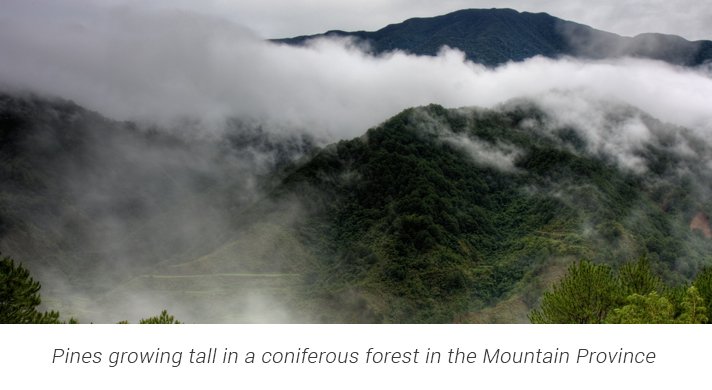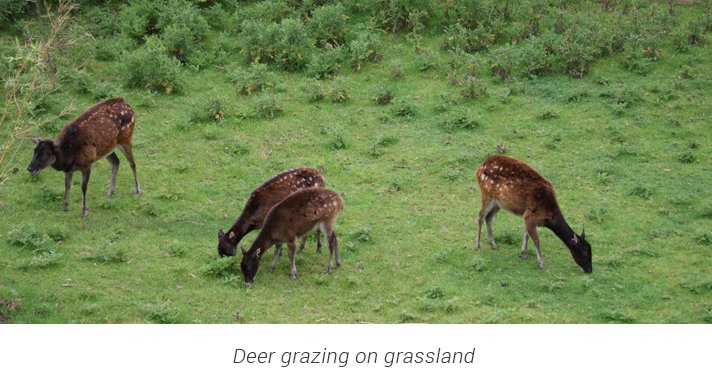Forests
Coniferous Forests
Trees that bear their seeds in cones make up a coniferous forest. Most coniferous forests are found in Alaska, Canada, Europe, and northern parts of Asia. These areas have very long winters and receive from moderate to high amounts of rainfall.
Some examples of the trees in a coniferous forest are the fir, pine, and spruce. These have thin and waxy leaves that are called needles. They also have the same shape and almost the same height such that, from afar, they look like a layer of thin trees towering over shorter shrubs. The other plants in this forest type include lichens and mosses.
In the Philippines, coniferous forests are found in the mountain provinces of northern Luzon.
Grasslands
As its name indicates, a grassland is a place where the dominant plant life is made up of grasses and grasslike plants. In some grasslands, some species of trees and shrubs also grow. These places are then referred to as woodlands.
The climate in a grassland is very dry and the place receives little rainfall but not as low as that in deserts. Despite these conditions, this habitat is able to sustain the growth of grasses because grasses are hardy plants that grow despite challenges in their environment. For instance, even after a grassland has been razed by fire, grass seeds that have fallen on the ground take root and flourish later.
Grasses are significant because grazing animals like horses and cattle feed on them. Some grasses bear flowers that attract insects and this causes pollination. Small animals that live in grasslands, like rats and snakes, hide among the grasses to escape their predators.
Grasslands are found in Africa, Asia, the midwestern parts of the United States, Canada, and even Russia.




